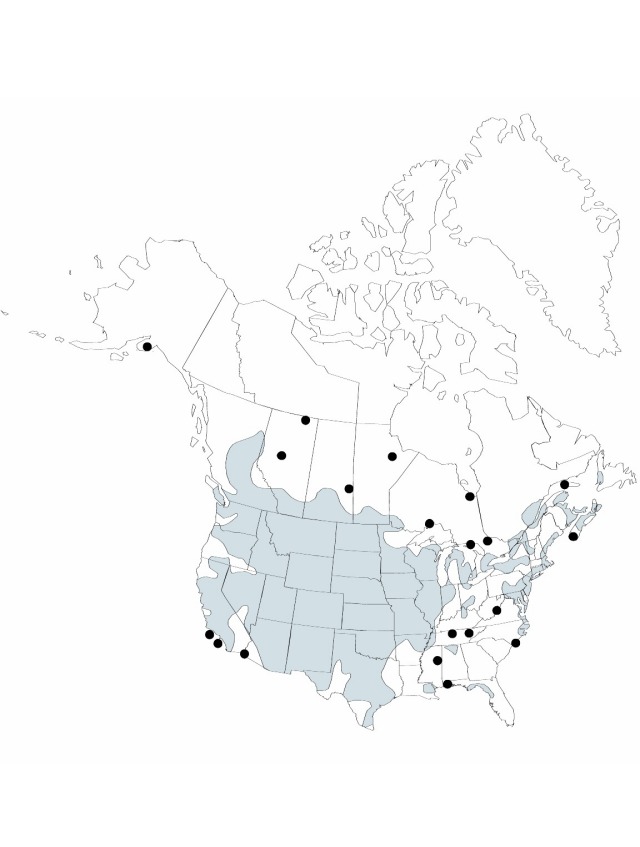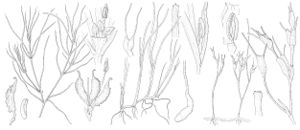Herbs entirely submersed. Stems to 50 cm × 0.2–0.6 mm. Leaves 3.5–4.2 cm × 0.2–1 mm, apex acute. Staminate flowers: filament 1.5–2 mm, connective prolonged into blunt tip 0.1 mm. Pistillate flowers: pistils 4–5; style 0.4–0.7 mm. Fruits 1.7–2.8 × 0.6–0.9 mm; rostrum 0.7–2 mm; podogyne 0.1–1.5 mm; pedicel 0.3–1.2 mm.
Phenology: Flowering spring–summer.
Habitat: Brackish or fresh waters of streams, lakes, or estuaries
Elevation: 0–2900 m
Distribution

Alta., B.C., Man., N.B., Nfld. and Labr. (Nfld.), N.W.T., N.S., Ont., P.E.I., Que., Sask., Ala., Alaska, Ariz., Ark., Calif., Colo., Conn., Del., D.C., Fla., Idaho, Ill., Ind., Iowa, Kans., Ky., La., Maine, Md., Mass., Mich., Minn., Miss., Mo., Mont., Nebr., Nev., N.H., N.J., N.Mex., N.Y., N.C., N.Dak., Ohio, Okla., Oreg., Pa., R.I., S.Dak., Tenn., Tex., Utah, Vt., Va., Wash., W.Va., Wis., Wyo., Mexico, West Indies, Central America, South America, Eurasia, Africa, Australia.
Discussion
Outside of Europe most Zannichellia are considered to be Z. palustris (W. Van Vierssen 1982). In Europe three species have been recognized based on stamen length, fruit length, podogyne length, and the rostrum to fruit length ratio. For Z. palustris in Europe the mean rostrum length is 0.78 ± 0.20deletion} mm, the mean podogyne length is 0.4 ± 0.19 mm, and the rostrum to fruit ratio is less than 0.5 (W. Van Wierssen Vierssen 1982). North American Zannichellia does not match any of these figures exactly. In North America Zannichellia has been considered historically to comprise only one species, which has been called Z. palustris. Until further research determines the range of Zannichellia and species delimitations, we areI am continuing to consider all North American material to be monospecific and am are applying the name Z. palustris to our that material.
Selected References
None.
